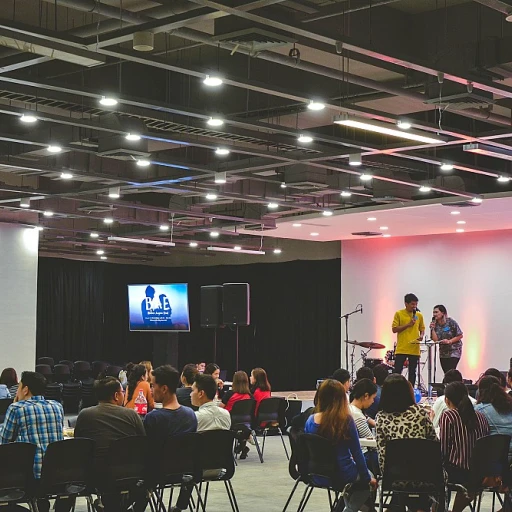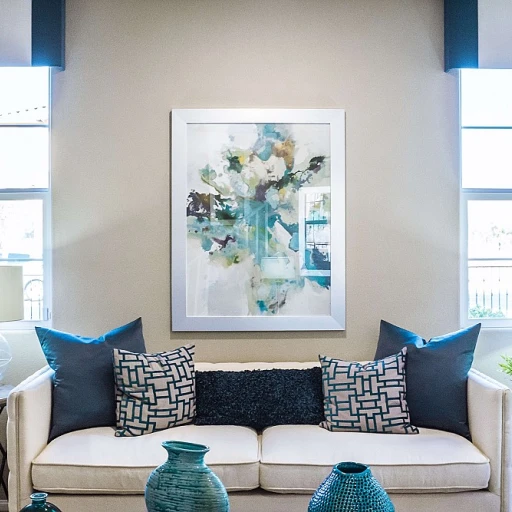
Understanding the Core Principles of Sustainable Design
Sustainability as a Cornerstone in Contemporary Design
In recent years, the design landscape has become an arena where environmental considerations and innovation converge. Understanding sustainable design means exploring the synthesis of aesthetics, functionality, and responsibility to our planet. At its core, this approach seeks to minimize negative environmental impacts through thoughtful product lifecycle considerations.
Aligning with sustainability involves strategies like resource efficiency, waste minimization, and the usage of renewable and recycled materials. These principles are not mere trends but foundational elements that drive industry change. By doing so, designers position themselves not only as creators of products but also as guardians of ecological integrity.
Navigating the Balance Between Tradition and Innovation
The challenge lies in integrating these sustainable practices without compromising design excellence. It requires a delicate balance, acknowledging the value of tradition while embracing innovation. This evolution in thought promotes a harmony that not only satisfies aesthetic and functional requirements but elevates the standards of responsible design.
Learning and Adapting for the Future
While understanding foundational principles is essential, ongoing learning and adaptability to future trends are equally crucial. As sustainable design continues to evolve, leaders in the field must foster a culture that prioritizes both innovation and sustainability. They need to equip themselves with a broad understanding of resources and methods that reduce environmental impacts, as highlighted in discussions on whether artificial intelligence is revolutionizing or evolving digital design. For further insights, explore artificial intelligence's role in design evolution.
The Role of Technology in Driving Design Innovation
The Intersection of Cutting-Edge Tech and Design
In today's rapidly evolving world, technology plays a pivotal role in revolutionizing design. When merging tech with design innovation, the possibilities are endless. Key factors such as machine learning, virtual reality, and the Internet of Things (IoT) are not only enhancing the aesthetics of products but also transforming how they function and interact with users. One can't discuss the role of tech in design without mentioning its ability to streamline sustainable practices. For example, AI-driven design tools optimize resource utilization, reducing waste and minimizing environmental footprints. For more insights on this transformation, consider exploring the role of artificial intelligence in graphic design. Moreover, technology fosters collaboration across industries, enabling designers to innovate beyond traditional boundaries. This collaboration, combined with data analytics, provides designers with valuable insights into consumer behavior and preferences, driving the creation of products that are not only innovative but also sustainable. Finally, technology adds a layer of adaptability to design. Products are now being built to evolve over time, offering updates that provide enhancements, rather than rendering them obsolete. This adaptability ensures long-term user satisfaction and aligns with sustainable design principles.Case Studies: Successful Integration of Innovation and Sustainability
Bridging Innovation with Sustainability: Real-world Examples
Exploring the successful amalgamation of innovation and sustainability in design offers insights into the practices that drive excellence. Companies often face the challenge of aligning environmentally friendly practices with cutting-edge design solutions, yet many have navigated this complex terrain effectively.
One notable figure in sustainable design, the renewable energy sector, is increasingly integrating new technologies that align with eco-friendly principles. This transformation is visible in projects where solar and wind energy infrastructures are designed not just for functionality but also with aesthetic considerations, facilitating a harmonious balance between utility and elegance. The role of Digital Immersion through technologies like Augmented Reality (AR) is expanding, granting designers the ability to visualize and iterate on sustainable design concepts efficiently. For in-depth insights into the digital revolution, explore the transformative impact of augmented reality on virtual design here.
Sustainable architecture serves as another domain where design innovation meets environmental responsibility. Buildings that once prioritized function now incorporate materials and design methodologies that reduce carbon footprints while fostering energy efficiency. Modular construction techniques—employing recyclable or upcycled materials—are proving that sustainability doesn’t need to compromise design quality or aesthetic value.
Heralded examples, like adaptive reuse projects, showcase how existing structures are repurposed into new facilities without the environmental cost of demolition. This method conserves resources and highlights an approach rooted in responsibility and innovation. With each successful project, design leaders set benchmarks, illustrating the possibilities in merging bold, innovative design with unwavering sustainability commitments.
Materials and Methods: Choosing Sustainable Options
Eco-Friendly Design Choices: Materials and Practices
When considering sustainable design, the selection of materials often sits at the heart of the decision-making process. These choices are not just about reducing the carbon footprint, but also about ensuring product longevity and reducing waste. As industries continue to innovate, a broader variety of eco-friendly materials and methods are becoming available, offering new opportunities for sustainable creation.
One significant shift in the industry is the increased use of biodegradable materials such as bioplastics, which can replace conventional plastics. These bioplastics are designed to decompose more naturally and are produced using renewable biomass sources like plant starches, which help in minimizing environmental impact.
Similarly, recycled materials are gaining traction in production cycles, allowing objects to be created from materials that would otherwise contribute to waste. This not only reduces the demand for new raw materials but also curtails the energy expended in new production.
Beyond materials, designers are also exploring innovative construction methods such as modular design. This approach facilitates better resource management and allows parts to be reused or upgraded over time, extending product life and reducing waste. Another method gaining popularity is digital fabrication, which includes techniques like 3D printing that enable precision in material use, thus minimizing waste during the manufacturing process.
Incorporating these sustainable practices provides a dual benefit: reducing ecological harm and often lowering costs over time by decreasing waste and material expenditure. The economic impact of these practices is part of a broader conversation around the benefits of sustainable design choices and how they harmonize with business objectives.
The Economic Impact of Sustainable Design
Economic Advantages Driven by Sustainable Design
When examining the economic impact of sustainable design, it becomes evident that it involves more than just environmental benefits. Companies, industries, and individual designers are finding economic incentives intertwined with these practices, leading to efficient resource use and enhanced profitability.- Cost Reduction Opportunities: One notable advantage of sustainable design is its potential to lower costs. By utilizing renewable materials and incorporating energy-efficient processes, companies can significantly cut down on production and operational expenses. Sustainable design strategies often include reducing waste and minimizing resource consumption, directly translating into economic savings.
- Increased Consumer Demand: With increasing awareness of environmental issues, consumers are inclining towards brands that commit to sustainability. This shift in consumer behavior incentivizes businesses to adopt sustainable design, boosting their market share and strengthening brand loyalty. Notably, companies can leverage this to not only meet expectations but to exceed them, cultivating long-term customer relationships.
- Enhanced Regulatory Compliance and Risk Management: As regulatory bodies impose stricter environmental regulations, companies proactively incorporating sustainable design are more adept at meeting compliance requirements. This proactive approach minimizes risk and potential financial penalties, which can arise from failing to adhere to sustainability standards. Precisely aligning new regulations with their design strategies ensures businesses remain competitive and economically stable.
- Innovation as a Differentiator: The integration of innovative technologies and sustainable methods presents companies with distinctive advantages in the market. Employing new materials and creative solutions enables businesses to differentiate themselves, potentially opening avenues for premium pricing and increased revenue streams.
Future Trends in Sustainable Design Innovation
Emerging Patterns in Sustainable Design
The landscape of design innovation and sustainability is continuously evolving, leaving a remarkable imprint on industry strategies globally. One of the compelling trends is a shift towards circular design, focusing on resource efficiency and waste minimization. The circular economy champions the idea of designing products with their entire lifecycle in mind, from the initial concept to their eventual disposal or repurposing.
An exciting example of this trend is the rise of biomimicry in sustainable design. Designers and architects are increasingly looking to nature for inspiration, as it offers sustainable solutions honed over millions of years. This approach not only encourages ecological balance but also stimulates creative breakthroughs in product and architecture design.
Leveraging Digital Transformation
The role of digital transformation continues to play a pivotal part in sustainable design practices. Technologies such as AI, machine learning, and 3D printing are not just buzzwords; they are instrumental in enhancing efficiency and reducing environmental impact.
- AI can optimize design processes by predicting material usage and resulting waste.
- 3D printing allows for precision in creating prototypes, thereby saving both time and resources.
Further, the adoption of smart materials is set to transform sustainable design. These materials can change in response to environmental conditions, greatly enhancing functionality while promoting environmental responsibility.
Adapting to Consumer Expectations
Another key trend shaping sustainable design is the increasing consumer demand for transparency and ethical production. Modern consumers, especially the younger demographics, are informed and vocal about their preferences for brands that prioritize sustainable practices. Designers are responding by adopting eco-labeling and providing detailed product origins, leading to an informed customer base that values authenticity.
Integrating these innovative practices not only meets customer expectations but also nurtures brand loyalty and integrity, making it essential for brands to stay relevant in a competitive marketplace.
Policy and Incentives
At the macro level, government policies are accelerating the shift towards sustainability in design. Subsidies, tax incentives, and stringent regulatory frameworks are being put in place to encourage adoption among businesses. As regulations become more robust, they are prompting designers to prioritize sustainable practices, which concurrently drive both compliance and innovation.
Keeping abreast of future trends in sustainable design involves an appreciation for technology's transformative potential, consumer perspectives, innovative materials, and regulatory environments. By embracing these elements, designers can effectively contribute to a sustainable future for the industry.












